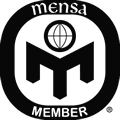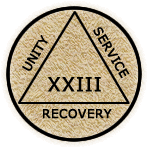Selected portions of the BloostonLaw Telecom Update, and/or the BloostonLaw Private Users Update — newsletters from the Law Offices of Blooston, Mordkofsky, Dickens, Duffy & Prendergast, LLP are reproduced in this section with the firm's permission. 
| BloostonLaw Telecom Update | Vol. 17, No. 6 | February 12, 2014 |
Initial Expressions of Interest in Rural Broadband Experiments Due March 7 The FCC has adopted a March 7, 2014 date for the filing of non-binding Expressions of Interest (EOIs) in conducting experiments in price cap and rate of return areas. They do not to require filing entities to proceed with the submission of formal proposals for their experiments, and they are not required as a precondition for the filing of such formal proposals at the appropriate time. Since the letter of interest is non-binding, all carriers should consider filing, as the strength of the initial show of interest may have an impact on the specifics of the experiments themselves. To this end BloostonLaw has prepared an EOI template, which we can help to further tailor to specific companies to appropriately identify the entity, service area, technology, service offerings, and other requisite information as set out in the Technology Transitions Order. Clients interested in submitting EOIs should contact the firm without delay. Headlines 
FCC Identifies Potential High-Cost Areas for Rural Broadband Experiments The FCC's Wireline Competition Bureau (WCB) has released a Public Notice announcing the list of census tracts that it considers to be potentially suitable for the targeted rural experiments described in the Technology Transitions Order of January 31, 2014. According to the Public Notice, the list of census tracts is also accompanied by potential support amounts, based on the most recent version of the Connect America Cost Model (CAM v4.0). The list appears to contain both price cap and rate of return areas. Carriers should review the list of potentially eligible census tracts to determine whether any are located within their service areas and prepare a non-binding letter of interest to submit to the FCC by March 7, 2014. BloostonLaw has developed a template for the letter of interest, and is prepared to help tailor it your company's specifications. Since the letter of interest is non-binding, all carriers should consider filing, as the strength of the initial show of interest may impact the amount of funding available and other aspects of the program. The FCC has stated that proposals in price cap territories will be entertained at the census tract level, with funding only provided for locations in eligible census blocks within that census tract. For rate of return areas, however, the FCC is considering entertaining proposals at the census block level. The eligible locations include only those in census blocks that are unserved by any provider of 3 Mbps downstream/768 kbps upstream. For purposes of the experiment, the FCC has also stated that any unserved census blocks where the average cost per location equals or exceeds the likely funding threshold would be eligible for the experiments. For simplicity's sake, the WCB indicated it used a funding threshold of $50 to generate the list of potential high-cost areas in price cap territories. According to the Public Notice, these illustrative results do not prejudge the final funding threshold and extremely high cost thresholds for purposes of the offer of model-based support to price cap carriers. Chairman Wheeler Reiterates Plan to Eliminate the QRA FCC Chairman Tom Wheeler responded to letters from a number of members of Congress (Sens. Tom Harkin (Iowa), Amy Klobuchar and Al Franken (Minn.), and Tom Udall and Martin Heinrich (D-N.M.) and Congressmen Stevan Pearce, Michelle Lujan Grisham and Ben Ray Luján (New Mexico) expressing concern with the FCC's revisions to universal service support and their impact on rural carriers. In response to the Congressional inquiries, Chairman Wheeler reiterated his support for "all Americans to have access to high-speed broadband networks" and to the "importance of universal service." Chairman Wheeler stated that he agreed that "the Commission must make timely decisions in order to provide regulatory certainty and create incentives to further efficient investment in broadband networks" and that the FCC "must also be open to modifications to the reforms if it is clear that particular rules are not serving their intended purpose." To that end, Chairman Wheeler reiterated that he has "directed the Wireline Competition Bureau to prepare an order for the Commission's consideration that would eliminate the QRA." Comment Sought on T-Mobile–Verizon Spectrum Sale/Swap; Transaction Could Improve Prospects for Interoperable 700 MHz Equipment and Roaming on Earlier Timetable An FCC Public Notice issued last week ( DA 14-163 ) established a pleading cycle for petitions to deny and other comments on the proposed assignment and exchange of Lower 700 MHz, AWS and PCS licenses by and among T-Mobile US, Inc. and Verizon Wireless. Petitions to Deny are due by February 28, 2014, with oppositions due March 10, 2014 and replies due by March 17, 2014. Under the proposed transaction, which was announced by the parties in early January, T-Mobile would pay almost $2.4 billion in cash and assign certain AWS-1 and PCS licenses to Verizon in exchange for 700 MHz A-Block spectrum in 240 metro areas covering 150 million POPs. This 700 MHz spectrum covers 8 of the top 10 markets, and 21 of the top 30 markets in the US. Verizon would get AWS-1 and PCS licenses from T-Mobile, which the parties have valued at around $950 million, including AWS spectrum in 19 markets covering 34 million POPs, and PCS spectrum in 8 markets covering 21 million POPs. T-Mobile Proposed Lower 700 MHz A-Block Holdings 
According to statements in the parties' FCC license assignment applications, the proposed transactions would provide T-Mobile with low-band spectrum associated with significant population coverage for the first time. T-Mobile currently holds a Lower 700 MHz A-Block license in Boston. The company expects that the 700 MHz spectrum would increase the reliability, performance and coverage of its networks in the subject markets, improving in-building penetration in urban areas and coverage in suburban and rural areas. For its part, Verizon indicates it would use this spectrum to boost network capacity in various markets. In the swap, Verizon gains spectrum in Los Angeles, San Francisco, Dallas, Atlanta and Detroit, according to presentation slides accompanying the deal announcement. Assuming necessary equipment is available, T-Mobile should be able to deploy 700 MHz A-Block facilities in many markets without delay. The company indicates that potential interference from Channel 51 DTV operations covers less than 50% of the licensed POPs, and that this potential interference with the lower (uplink) segment of the A-Block will be fully resolved as part of the Broadcast Incentive Auction. A 700 MHz interoperability agreement negotiated by the FCC last fall included the requirement for Dish Network to limit power levels of its E-Block operations, for the purpose of eliminating the potential for interference to the upper (downlink) segment of the A-Block. T-Mobile's investment in the Lower 700 MHz spectrum would appear to be good news for our clients who are Lower 700 MHz A-Block licensees, due to the increased likelihood of interoperable A-Block equipment will be available on an earlier timetable than AT&T promised last fall, and the possibility that A-Block roaming arrangements may be available on better terms with a smaller nationwide carrier. In an ex parte presentation filed with the FCC in 2012, T-Mobile argued that the FCC should adopt rules that would make all of the band classes in the 700 MHz range interoperable. "As the commission has recognized, roaming allows carriers to be more competitive and provides important benefits to consumers," T-Mobile wrote in its filing. "Moreover, because of the concentration in the wireless marketplace, roaming is an increasingly important tool for carriers to be able to compete. Therefore, current carriers' ability to provide roaming on 700 MHz systems will promote competition in the wireless marketplace, to the ultimate benefit of wireless consumers." Assuming there are no significant regulatory delays, the proposed transactions are expected to close by mid-2014. Comments Filed on House Committee White Paper on Updating Communications Act On January 31, 2014, a number of comments were filed in response to a white paper announced by House Energy and Commerce Committee Chairman Fred Upton (R-Mich.) and Communications and Technology Subcommittee Chairman Greg Walden (R-Ore.) on updating the Communications Act. Over 100 entities covering a wide variety of industry perspectives filed responses, including AT&T, ITTA, NARUC, NASUCA, NTCA, the Small Company Coalition, USTelecom, and Voice on the Net Coalition. The white paper posed a number of questions upon which commenters were invited to opine, such as: What principles should the titles of the Communications Act address? What should a modern Communications Act look like? Are the structure and jurisdiction of the FCC in need of change? How can the laws be more technology-neutral? Does the distinction between "information services" and "telecommunications services" continue to serve a purpose? Given the sheer number of comments received, a wide array of views was espoused, and the same idea was expressed in a variety of ways. For example, AT&T proposed five over-arching principles for reform (Service to All Americans; Public Safety and Network Reliability; Competition; Consumer Protection; and Spectrum Management) while NTCA proposed three (universal service, consumer protection, and competition). FCC Chairman Tom Wheeler Remarks at Silicon Flatirons On February 10, 2014, FCC Chairman Tom Wheeler addressed the Silicon Flatirons at the University of Colorado Law School. The theme of the speech was taken from a quote from President Abraham Lincoln's second address to Congress: "As our case is new, so we must think anew, and act anew." Translation The Commission already has the legal authority to act anew to address the most pressing issues it now faces. In the speech, Chairman Wheeler largely addressed the challenges and developments which have occurred in the years since the Telecommunications Act of 1996 was enacted, stating that when the 1996 Act was passed "Congress … did not clearly foresee the rise of broadband Internet access services, let alone their eventual centrality to all forms of electronic communications." The Chairman stated that any Congressional update to the Communications Act "will be a long process," noting that it required eight years to draft the 1996 Act. But he emphasized that the Commission has the authority to act anew to address the contemporary issues confronting the communications industry. He noted that in the recent Verizon v. FCC decision on net neutrality, the Court "invited the Commission to act to preserve a free and open Internet. I accept that invitation, and in the coming days, I will be outlining how I propose to proceed." According to the Chairman, in the Verizon case the Court "ruled that the FCC has the legal authority to issue enforceable rules of the road to preserve Internet freedom and openness. It affirmed that Section 706 of the [1996 Act] gives the FCC authority to encourage broadband deployment by, among other things, removing barriers to infrastructure deployment and promoting competition. It also found that the goals of the Open Internet Order are within the scope of authority granted to the Commission. The court opinion specifically included that the Commission was justified in concluding that an open Internet would further the interest of broadband deployment by enabling the virtuous cycle of innovation that unites the long-term interests of end-users, broadband networks and edge-providers. After all, [the Court] explained, when edge-providers are prevented from reaching end-users, demand for both those upstream applications and for network expansion suffer. So, the preservation of an open Internet is within the FCC's authority." He concluded by saying that "on all major issues, we will act when the record warrants and the public interest demands." Law & Regulation 
FCC Issues Forfeiture for Form 499 Reporting, Contribution Violations On February 11, 2014, the FCC released a Forfeiture Order assessing a monetary forfeiture of $179,000 against Unipoint Technologies, Inc., d/b/a Comfi.com, a/k/a Communications Fidelity (Unipoint). According to the Forfeiture Order, Unipoint willfully violated a number of sections of the Communications Act by failing to: (1) apply for and obtain authorization from the Commission to provide international telecommunications service; (2) timely file its 2007 annual Telecommunications Reporting Worksheet (Form 499-A); (3) timely make required contributions to the Telecommunications Relay Service (TRS) Fund; and (4) timely file annual traffic and revenue reports for service between the United States and overseas points (i.e., international telecommunications traffic reports). Unipoint is a Massachusetts corporation that, through the trade name Comfi.com, operates as a prepaid calling card provider reselling international and domestic telecommunications services. On October 11, 2012, the FCC issued a Notice of Apparent Liability to Unipoint which found that Unipoint had apparently willfully and repeatedly violated a number of sections of the Communications Act and the FCC's rules. Unipoint did not dispute the violations, but rather contended that its violations were not willful and requested a reduction in the forfeiture amount. In the Forfeiture Order, the FCC rejected Unipoint's request, instead finding that the record established that Unipoint's violations were willful because "because they resulted from Unipoint's conscious and deliberate omissions." Under the Act, 'willful' means that the licensee knew that he was doing the act in question, regardless of whether there was an intent to violate the law. Form 499-A is due annually on April 1. Carriers seeking assistance in preparing and submitting their filings should contact the firm without delay. President Obama Signs Farm Bill, Creating Rural Broadband Pilot Program and Tinkering with RUS On February 7, 2014, President Obama signed the Agriculture Act of 2014 (HR 2642) into law. The Act, more popularly known as the Farm Bill, includes revisions the Rural Electrification Act of 1936, which authorizes the Rural Utility Service to provide funding to support rural telecommunications. The highlight of the Act is the creation of a "Rural Gigabit Network Pilot Program." This program will make $10 million available for each fiscal year from 2014 through 2018 (a total of $50 million) to bring "ultra-high speed service" to rural cities and towns. Ultra-high speed service is defined as 1 gigabit per second downstream transmission capacity. It may be difficult for many RLECs to qualify for the new program: In order to be eligible, service providers must: 1) demonstrate the ability to furnish ultra-high speed service to a rural area; 2) submit an application to participate when appropriate (the application itself or the timing of such is not yet available); 3) not already provide ultra-high speed service to a rural area within the same State in the proposed service territory; and 4) agree to complete buildout of ultra-high speed service by not later than 3 years after the initial date on which assistance under this section is made available. The Act also makes some important changes to RUS' existing broadband subsidy program, most notably by specifying a minimum acceptable broadband speed of 4 megabits per second downstream and 1 megabit per second upstream, and providing that at least once every 2 years, that minimum speed must be reviewed and may be adjusted through notice published in the Federal Register. Unfortunately, this may make it more difficult for rural telcos to plan and finance their broadband buildout, as they will be presented with a "moving target" by RUS. The Act also requires, for each application for assistance, a minimum of 15 days for the voluntary submission of information by other service providers that may bear upon the eligibility of the applicant for assistance – i.e., an opportunity for incumbent service providers to challenge applications. House Subcommittee Postpones Hearing on Broadband Stimulus The House Subcommittee on Communications and Technology has postponed the hearing entitled " Lessons Learned from the Broadband Stimulus ," which was originally scheduled to take place on February 11, 2014 at 10:30 a.m. At this time, the hearing has not been rescheduled, and a list of witnesses has not yet been released. California Bill Proposes Mandatory Cell Phone Kill Switches Wireless Week reports that a state legislator in California is proposing an anti-theft law that would require all smartphones and tablets sold in the state to include "kill switch" functionality that would render the device inoperable once activated. A bill to be proposed this spring by State Sen. Mark Leno, with the support of other elected and law enforcement officials, would require wireless device manufacturers to include the function on all devices or face fines of up to $2,500 for each device sold without a kill switch. If adopted, the measure would likely result in manufacturers including the function in all devices sold nationwide. Leno called on the wireless industry to step up as smartphone robberies have surged to an all-time high in California. "They have a choice. They can either be a part of the problem or part of the solution, especially when there is one readily available," Leno said. The theft of smartphones has been dubbed a "nationwide epidemic" by law enforcement officials. According to the FCC, in major cities like DC and New York, roughly 40% of all robberies now involve cell phones — endangering both the physical safety of victims and the security of the personal information on stolen devices. Major wireless carriers and CTIA have all rejected the idea of such a kill switch, noting that once the switch is used, the device is "bricked" and cannot be reused. Opponents have also argued that a kill switch could be a target for hackers seeking to harm individuals or larger groups of users like the Defense Department, Homeland Security or law enforcement officials. CTIA has outlined alternative theft-prevention measures for the wireless industry, such as creating a nationwide database to keep stolen phones from being reactivated. A national stolen phone database went online in November of 2012, however critics have claimed that the database is ineffective because many stolen phones end up overseas, and unique device identifiers can be changed by organized theft rings. "These 3G and 4G/LTE databases, which blacklist stolen phones and prevent them from being reactivated, are part of the solution," Michael Altschul, CTIA's senior vice president and general counsel, said in a statement. "Yet we need more international carriers and countries to participate to help remove the aftermarket abroad for these trafficked devices." FCC Authorizes Two TV Stations to Test Feasibility of Channel Sharing Two TV stations in the Los Angeles area have been granted authority by the FCC for six months to test the feasibility and practicality of sharing a single 6 MHz bandwidth channel. With the advent of digital TV came the realization that the 6 MHz of bandwidth needed for a single analog TV station could accommodate at least two digital TV stations. The testing is designed to demonstrate the necessary technical and legal steps for a successful channel sharing operation and to advance the understanding of channel sharing systems, in general. If the testing proves successful, it will likely encourage more TV stations to enter the planned TV incentive auction, thereby freeing up additional spectrum for wireless broadband operations. The two TV stations involved are noncommercial station KLCS, channel 41, in Los Angeles and commercial station KJLA, channel 49, in Ventura, CA. These two stations had responded to an FCC expression of interest in November of 2010 in authorizing one or more channel sharing pilots to demonstrate the feasibility of channel sharing. Under the plan authorized, both stations will test using the spectrum occupied by KLCS. Various multiplexing schemes and video compression formats will be explored as well as methodologies to limit viewer disruption and ensure the transmission of reliable data. In the final phase, implementation of full-time channel sharing will be tested, with KJLA remaining on-air, while KLCS transmits a shared bitstream with content from both stations using different virtual channels. At the conclusion of the six-month test period, which is renewable, the FCC is requiring a report of the research, experimentation and results showing both positive and negative aspects of the experiment. Industry 
U.S. Department of Labor Sues AT&T Over Worker Treatment The Hill's Technology Blog "Hillicon Valley" reported on February 10 that the U. S. Department of Labor has filed a civil lawsuit against AT&T in the United States District Court for the Northern District of Ohio's Eastern Division on behalf of 13 Ohio workers it claims were unlawfully punished after reporting injuries they sustained on the job. According to the article, the Occupational Safety and Health Administration (OSHA) has alleged that AT&T retaliated against the employees for reporting their workplace injuries by suspending them without pay, which is a violation of Federal whistleblower protection laws. Specifically, OSHA claims that in 13 separate instances from 2011 to 2013, AT&T workers were sent home without pay for reporting injuries they sustained on the job. The suspensions allegedly lasted from one to three days. The article further reports that AT&T justified the actions by claiming that each employee had violated a corporate safety standard. However, an OSHA investigation concluded that the employees were actually suspended for reporting their injuries, not for noncompliance with any company rules. "It is against the law for employers to discipline or suspend employees for reporting injuries," OSHA chief David Michaels said in a statement. "AT&T must understand that by discouraging workers from reporting injuries, it increases the likelihood of more workers being injured in the future. And the Labor Department will do everything in its power to prevent this type of retaliation." AT&T issued a statement saying that the suit is "without merit." White House Announces "Made in Rural America" Initiative The White House issued a Press Release on February 7, 2014, announcing the "Made in Rural America" export and investment initiative. According to the release, President Obama instructed the White House Rural Council, in coordination with the USDA, the Department of Commerce, the Small Business Administration, and other agencies, to "commit to connecting more rural businesses to export information and assistance through a comprehensive strategy." The President called for several specific commitments from government agencies over the next nine months: - Host five "Made in Rural America" regional forums dedicated to promoting rural exports by providing rural leaders and businesses with information about federal and other resources available to help expand exports.
- Convene an "Investing in Rural America" conference later this year to connect major investors with rural business leaders, high-level government officials, economic development experts, and other partners.
- Host training sessions to equip local USDA Rural Development staff in all 50 states plus territories with the tools they need to counsel businesses on export opportunities and resources.
- Provide enhanced export counseling for rural businesses to connect with foreign buyers
- Coordinate across the Administration to promote rural-produced goods and services
- Educate local leaders across the country
- Use the BusinessUSA online platform to better connect rural businesses with export and investment resources and coordinate support from across the federal government.
BloostonLaw will be monitoring this proceeding for impacts on and opportunities for the rural telecommunications field. Deadlines 
MARCH 1: CPNI ANNUAL CERTIFICATION . Carriers should modify (as necessary) and complete their "Annual Certification of CPNI Compliance" for 2013. The certification must normally be filed with the FCC by March 1. Because March 1 is a Saturday this year, per FCC Enforcement Bureau, carriers who may not be able to file on March 1 should plan to file by Friday, February 28. Note that the annual certification should include the following three required Exhibits: (a) a detailed Statement Explaining How the Company's Operating Procedures Ensure Compliance with the FCC'S CPNI Rules to reflect the Company's policies and information; (b) a Statement of Actions Taken Against Data Brokers; and (c) a Summary of Customer Complaints Regarding Unauthorized Release of CPNI. A company officer with personal knowledge that the company has established operating procedures adequate to ensure compliance with the rules must execute the Certification, place a copy of the Certification and accompanying Exhibits in the Company's CPNI Compliance Records, and file the certification with the FCC in the correct fashion. Our clients can forward the original to BloostonLaw in time for the firm to make the filing with the FCC by March 3, if desired. BloostonLaw is prepared to help our clients meet this requirement, which we expect will be strictly enforced, by assisting with preparation of their certification filing; reviewing the filing to make sure that the required showings are made; filing the certification with the FCC, and obtaining a proof-of-filing copy for your records. Please note, that BloostonLaw will respond to any requests concerning the filing of the CPNI report within 24 hours of receipt. If you do not receive a response within this timeframe, please contact the office to ensure that your request has been received. Clients interested in obtaining BloostonLaw's CPNI compliance manual should contact Gerry Duffy (202-828-5528). Note: If you file the CPNI certification, you must also file the FCC Form 499-A Telecom Reporting Worksheet by April 1. Calendar At-A-Glance 
February
Feb. 14 – Comments are due on Use of Mobile Wireless Devices on Airborne Aircraft.
Feb. 14 – Comments due on American Tower Petition for Waiver of Periodic Inspection of Marking and Lighting Alarm System Rules.
Feb. 18 – Effective date for new 911 reliability requirements.
Feb. 20 – Open Meeting.
Feb. 21 – Comments on NECA 2014 Average Schedule Formulas are due.
Feb. 21 – Reply comments due on American Tower Petition for Waiver of Periodic Inspection of Marking and Lighting Alarm System Rules.
Feb. 28 – PRA comments on Rural Call Completion are due.
Feb. 28 – Petitions to Deny T-Mobile/Verizon Spectrum Sale are due. March
Mar. 1 – Annual CPNI Certification is due.
Mar. 3 – Copyright Statement of Account Form for cable companies is due.
Mar. 3 – FCC Form 477 (Local Competition & Broadband Reporting) is due.
Mar. 3 – Comments on the Wireline Competition Bureau's VoIP Numbering Trial Report are due.
Mar. 3 – Reply comments on Public Knowledge's Petition for Declaratory Ruling on CPNI are due.
Mar. 7 – Initial expressions of interest in rural broadband experiments are due.
Mar. 7 – Reply comments on NECA 2014 Average Schedule Formulas are due.
Mar. 10 – Oppositions to Petitions to Deny T-Mobile/Verizon Spectrum Sale are due.
Mar. 10 – Electronic filing deadline for Form 497 for carriers seeking support for the preceding month and wishing to receive reimbursement by month's end.
Mar. 17 – Reply comments are due on Use of Mobile Wireless Devices on Airborne Aircraft.
Mar. 17 – Replies to Oppositions to Petitions to Deny T-Mobile/Verizon Spectrum Sale are due.
Mar. 31 – FCC Form 525 (Delayed Phase-down CETC Line Counts) is due.
Mar. 31 – FCC Form 508 (ICLS Projected Annual Common Line Requirement) is due. April
Apr. 1 – FCC Form 499-A (Telecommunications Reporting Worksheet) is due.
Apr. 1 – Annual Accessibility Certification is due.
Apr. 1 – PRA comments on Form 477 (Local Telephone Competition and Broadband Reporting) are due. | 














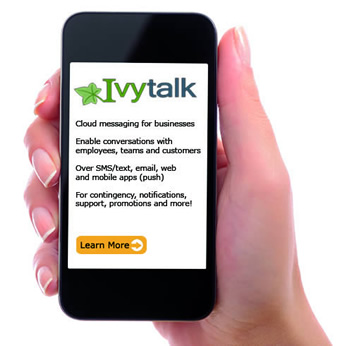
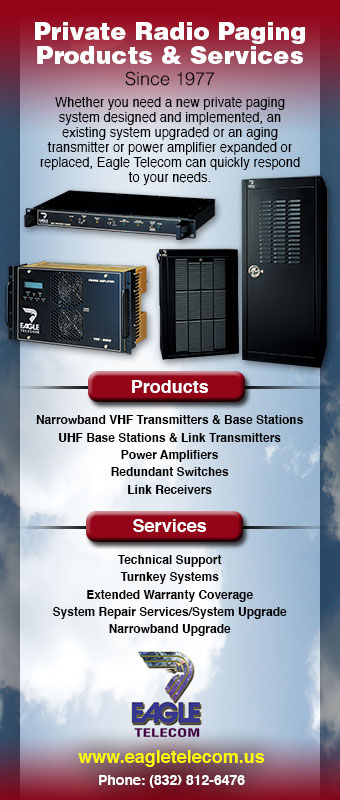

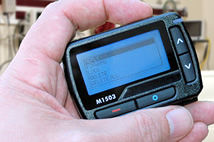 Weighing only 2.5 ounces, the M1503 response pager is roughly the size of a small stack of business cards. It is typically worn on the belt, enabling quick and easy access in the event of a personal safety issue. The M1503 is part of the CRS alerting/dispatch system, which uses high-power digital transmitters to deliver critical messages to all intended recipients within five seconds, and then tracks who receives the message, who reads it, and how they will respond. The CRS system removes uncertainty, improves efficiency, and meets all HIPAA guidelines, with strong AES-128 encryption.
Weighing only 2.5 ounces, the M1503 response pager is roughly the size of a small stack of business cards. It is typically worn on the belt, enabling quick and easy access in the event of a personal safety issue. The M1503 is part of the CRS alerting/dispatch system, which uses high-power digital transmitters to deliver critical messages to all intended recipients within five seconds, and then tracks who receives the message, who reads it, and how they will respond. The CRS system removes uncertainty, improves efficiency, and meets all HIPAA guidelines, with strong AES-128 encryption.


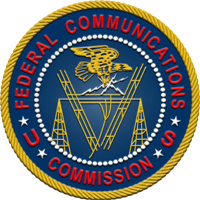













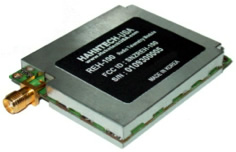







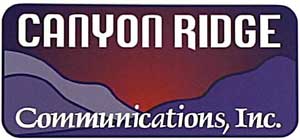





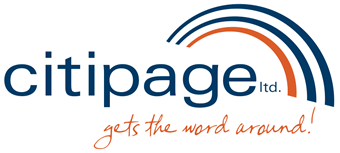












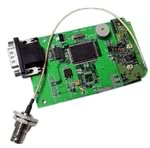


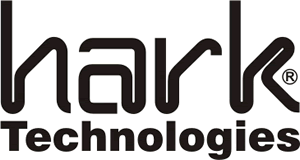
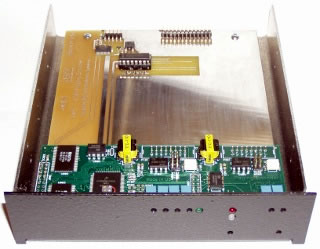

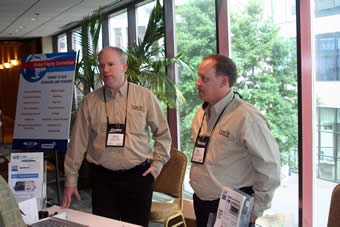 David George and Bill Noyes
David George and Bill Noyes



